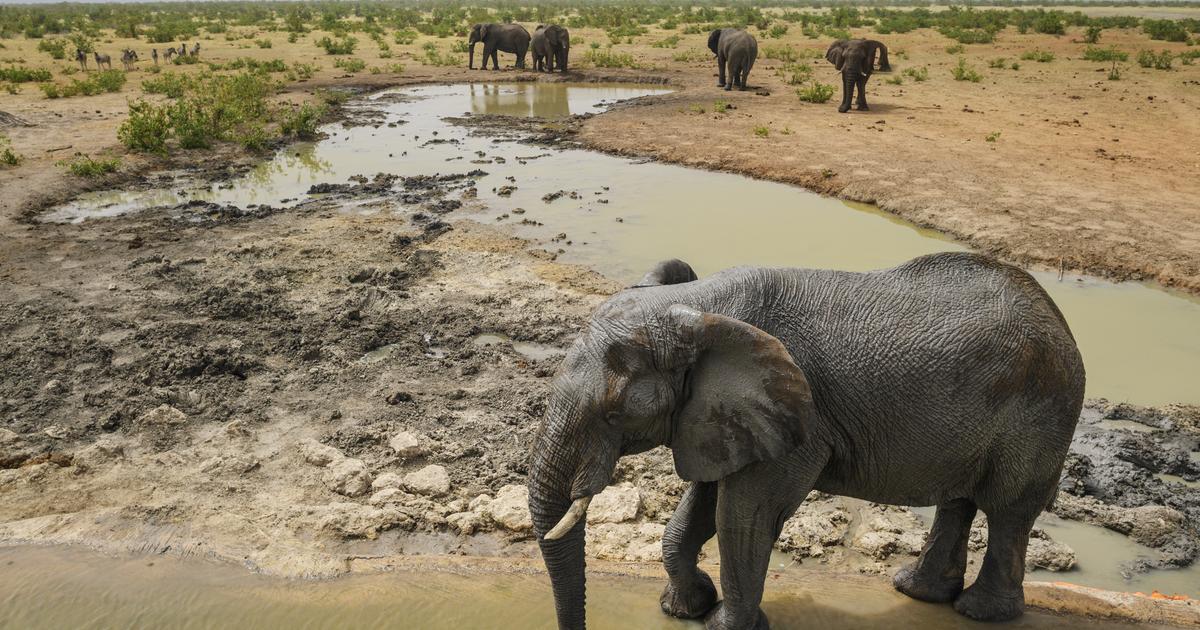Enlarge image
Map with precipitation data (left) and vegetation index (right)
Photo: Joshua Stevens / NASA Earth Observatory
In the Horn of Africa there are usually two rainy seasons per year.
In Somalia the period of March, April and May is referred to as "Gu".
The rainy phase from October to December is the »Deyr«.
This precipitation is vital for the people because it enables them to till their fields and to feed their cattle.
But already in 2020 the »Deyr« season turned out to be extremely meager.
It rained a lot less than normal.
The following year it was no different and in addition the »Gu« was canceled completely in the spring.
In some areas it has not rained for a long time.
The Shabelle, a river in Ethiopia and Somalia, recorded the lowest rainfall since 1981.
In parts of Kenya, shepherds report that up to three quarters of their flocks have died.
Kenya and Somalia have now declared a drought emergency, and similar conditions also prevailed in southern and eastern Ethiopia.
The situation threatens to worsen.
After the three extremely lean rainy seasons in a row, more than 20 million people in East Africa are heading for a disaster.
The worst famine in 35 years threatens.
Climate and agricultural experts are already advising governments and aid organizations to prepare for the considerable need for food aid in the Horn of Africa. The Famine Early Warning Systems Network (FEWS Net), a program of the US agency for international development, is one of the reminders. To this end, experts create global analyzes of food security in order to keep an eye on humanitarian crises in good time. The American space agency NASA is also involved, providing climate and weather data as well as satellite images.
The two images above are also used by the FEWS Net. The map at the top left shows the precipitation anomalies for the »Deyr« season 2021 and reveals how much precipitation fell in comparison to the average. The very dark brown regions show that only 30 percent of the other mean has fallen here.
The map at the top right shows anomalies in the vegetation and uses a certain index (Normalized Difference Vegetation Index). Basically, this is a measure of how green the region is based on the amount of red and near-infrared light reflected from the leaves. Healthy vegetation reflects more infrared light and less visible light than stressed vegetation. The map compares the index from December 2021 with the long-term average from 2000 to 2013. It was created using data from NASA's "Terra" earth observation satellites.
Failure to rainfalls in East Africa has multiple effects: lower crop yields, shortage of feed, exhausted water supplies and weakened and decimated livestock are the consequences.
According to the Food and Agriculture Organization of the United Nations, a total of at least 60,000 animals perished - milk production is 80 percent below average.
And grain production has also been reduced by 50 to 70 percent.
Experts are currently looking at the coming rainy season in spring with concern.
"A bad season from March to May 2022 would lead to an unprecedented succession of four below-average rainfall periods since 1981," says a FEWS Net report from December.
And even if rains are normal in March, April and May, the region will have a persistent long-term precipitation deficit.
Another humanitarian catastrophe seems almost inevitable.
The current forecast by NASA for soil moisture paints a bleak picture.
The earth, watering places and willows will continue to dry out in the coming months.
The corona pandemic and violent regional conflicts also contribute to the desolate situation.
joe















